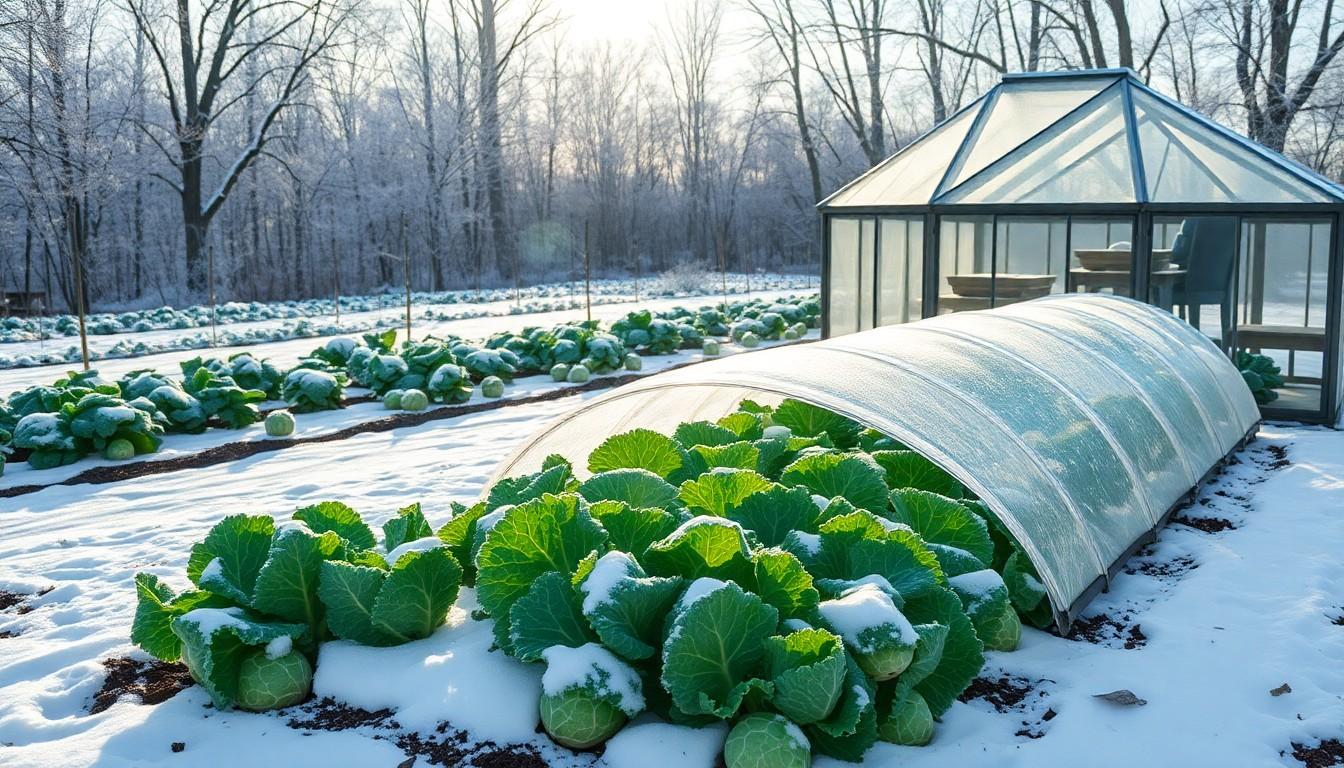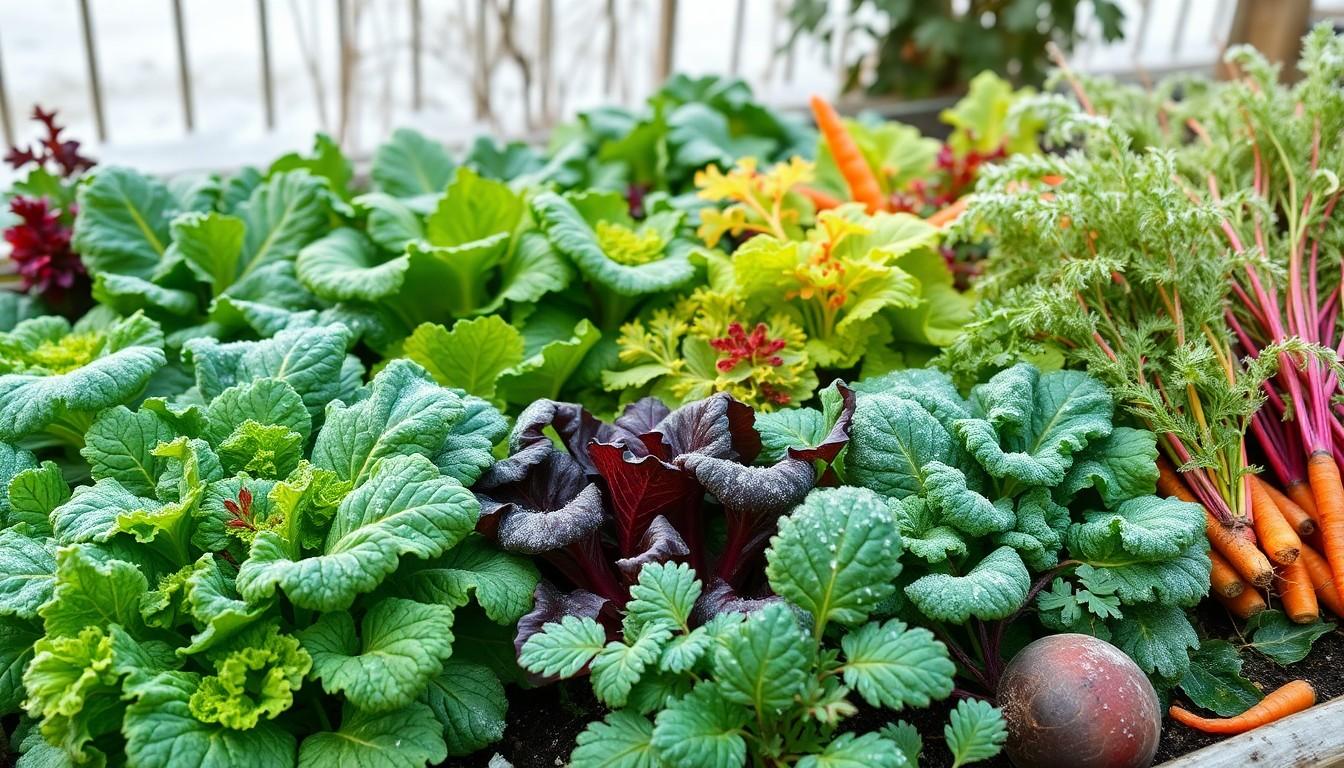Phone:
(701)814-6992
Physical address:
6296 Donnelly Plaza
Ratkeville, Bahamas.

When the temperatures drop and the snow starts to fall, most gardeners hang up their trowels and call it a season. But not the savvy ones! Winter vegetable gardening is like a secret club where members enjoy fresh produce while everyone else is stuck with sad, wilted lettuce from the grocery store.
Winter vegetable gardening offers dedicated gardeners a chance to produce fresh vegetables even in colder months. This practice yields several advantages that contribute to both gardening success and overall environmental health.
Extending the growing season allows for the harvest of a variety of vegetables well into the winter months. Gardeners growing cold-tolerant crops, such as kale and Brussels sprouts, enjoy fresh produce when others turn to store-bought options. Utilizing row covers and cold frames increases resilience against harsh weather. Fresh vegetables remain available for culinary use, contributing to a diverse winter diet. Many growers find that winter gardening creates a rewarding experience, as they witness plants thriving in challenging conditions.
Improving soil health through winter planting enhances the garden’s overall productivity. Cover crops, like clover and rye, boost soil nutrients and prevent erosion during winter months. These plants contribute organic matter when tilled in spring, enriching soil fertility. Healthy soil encourages beneficial microbes that support vigorous plant growth. They lend structure to the soil while reducing compaction, creating a balanced environment for future crops. Gardeners notice better yields in subsequent planting seasons, reflecting the long-term benefits of winter vegetable gardening.

Winter gardening allows for a variety of nutritious vegetables that thrive in cooler conditions. Growers benefit from focusing on cold-tolerant crops that can withstand frosty temperatures.
Kale, spinach, and Swiss chard excel in winter gardens. These leafy greens tolerate cold weather, providing a steady supply of vitamins. Spinach grows best in protected areas but also flourishes outside with minimal frost. Kale becomes sweeter after frost, enhancing its flavor. Swiss chard’s vibrant colors add beauty, and this plant remains productive throughout winter. Covering these greens with row covers enhances their growth and protects them from harsh winds.
Root vegetables such as carrots, turnips, and beets perform well in winter conditions. Carrots benefit from being in the ground during frosty months, developing sweet flavors. Turnips mature quickly, allowing for multiple harvests throughout winter. Beets thrive in colder temperatures, with both the roots and greens offering culinary uses. Mulching these crops helps retain moisture and maintain soil temperature, promoting healthy root development.
Preparing the garden for winter is essential for successful winter vegetable gardening. Effective practices maximize the yield and enhance the garden’s resilience during chilly months.
Effective soil preparation benefits winter vegetables. Start by clearing debris, including weeds and dead plants, to reduce pest habitats. Tilling the soil at a depth of 12 inches improves aeration and allows nutrients to penetrate. Incorporate organic matter, such as compost or well-rotted manure, to enrich the soil and enhance moisture retention. Consider testing the soil pH; it should ideally range between 6.0 and 7.0 for optimal growth. Covering the soil with mulch protects it from freezing temperatures, maintaining a stable environment for root crops.
Selecting the right location plays a critical role in winter gardening. Opt for a site with maximum sunlight exposure, ideally at least six hours daily, to promote healthy growth. Shelter from cold winds is crucial, so positioning the garden near a wall or fence can help. Assess drainage; avoid low areas where water may pool as this can damage roots. Planting close to existing structures can provide warmth and protection. Strategically placing cold frames or row covers adds an extra layer of shelter, ensuring crops thrive despite winter’s challenges.
Winter gardening thrives on specific techniques that enhance crop resilience and yield. Utilizing cold frames and row covers can significantly extend the growing season for various vegetables.
Cold frames create a greenhouse effect, trapping sunlight and providing essential warmth. Creating a frame with transparent covers allows for the efficient use of sunlight while protecting plants from harsh winds. Gardeners can use hoops made of PVC or metal to support lightweight fabric or plastic, forming tunnels over garden beds. These structures enable the cultivation of hardy plants, like kale and spinach, through snow and frost, ultimately leading to earlier harvests when spring arrives.
Effective mulching strategies optimize soil moisture and temperature. Organic materials like straw, leaves, or wood chips serve as excellent mulch options, preventing soil from freezing excessively. Choosing the right thickness of mulch can ensure the preservation of beneficial organisms in the soil while also reducing weed growth. Regularly replenishing mulch throughout the winter maintains its effectiveness, allowing for robust root systems and healthier plants, even in colder conditions. Prioritizing these techniques can greatly enhance the success of winter vegetable gardening.
Winter vegetable gardening opens up a world of possibilities for those willing to embrace the chill. By selecting the right crops and employing protective techniques like row covers and cold frames, gardeners can enjoy fresh produce even in the depths of winter. This practice not only enriches the kitchen with seasonal flavors but also contributes to healthier soil and a more sustainable gardening approach. With the right preparation and care, anyone can transform their winter garden into a thriving source of nourishment. Embracing winter gardening is more than just a seasonal challenge; it’s an opportunity to cultivate resilience and creativity in the garden.